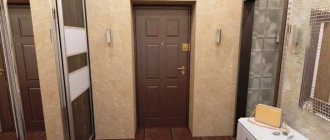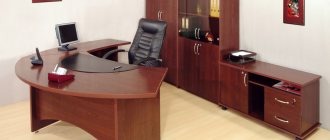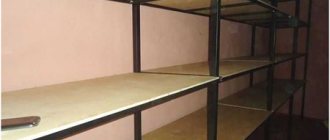No. 1. Composition of liquid nails
Liquid nails were invented in the USA. There, in the 60s, Macco first decided to package regular glue in individual cartridges for ease of use. A couple of years later, a new development appeared - Liquid Nails . In just a few years, liquid nails have conquered American users with a host of advantages, but they only entered the domestic market in the 90s.
The basis for the new type of glue was synthetic rubber with polymer additives . A special type of clay was used as a filler . In the USA, huge deposits of this clay are concentrated in the state of Texas, where the main industrial facilities of most local manufacturers are located. Today, instead of unique clay, ordinary chalk is often used. In this way, manufacturers kill two birds with one stone: on the one hand, chalk acts as a filler, but at the same time it gives the glue the necessary white color, which is achieved using classical technology by adding titanium oxide. Glue with the addition of chalk is significantly inferior in terms of quality.
Previously, toluene was added to liquid nails to improve adhesion and acetone to speed up drying. The increased toxicity of these substances forced them to abandon their use. However, some companies still use similar additives to reduce the cost of the composition. Their adhesives have an unpleasant odor and, as a rule, a suspiciously low price. Under no circumstances should such compositions be used indoors.
Construction of houses
34 votes
+
Vote for!
—
Vote against!
Liquid nails are a type of construction adhesive intended for joining homogeneous and dissimilar materials and capable of withstanding quite large loads. This product got its name from the American brand Liquid Nails (translated from English as liquid nails), created back in 1968 by Macco.
The development appeared on the domestic market in the mid-nineties and since then has been an indispensable assistant in the professional field. Liquid nails have also been used in everyday life. True, without knowing how to use liquid nails, you can seriously damage the surfaces being treated. Therefore, it is imperative to study what the material is and what the technology for working with it is. It would also be useful to know how to wash liquid nails if something suddenly goes wrong.
Table of contents
- Composition of liquid nails
- Types of liquid nails
- What are they for?
- Subtleties of choice
- Liquid nails: instructions
- Special pistol
- How to remove liquid nails?
Composition of liquid nails
The basis of the “mixture” is synthetic rubber and various polymers.
In the classic version of the “product,” the filler is a special clay with increased plasticity. It is mined in the USA, in the state of Texas. Here, in fact, the key production capacities of “local” manufacturers of liquid nails are concentrated.
A number of developers use calcium carbonate instead of “miracle clay” (in simple terms, just ordinary chalk). According to many experts, this does not have the best effect on the strength characteristics of the product.
Types of liquid nails
The power, adhesion and resistance of liquid nails to external factors is determined, first of all, by their chemical composition.
On this basis, it is customary to distinguish between organosoluble and water-soluble adhesive compositions.
Water-soluble products are made on the basis of polyurethane, PVC or acrylic copolymers. It has good adhesion to many building surfaces and is characterized by fairly high environmental friendliness. The main disadvantage of water-soluble formulations is intolerance to the freeze-thaw cycle. With it, their base is completely destroyed. Before purchasing, you should pay attention to some restrictions regarding the scope of application:
- polyurethane-based adhesives are poorly compatible with Teflon and polyethylene;
- acrylic and PVA-acrylate compositions are effective exclusively on porous surfaces.
Organosoluble liquid nails are based on synthetic rubber. They are more durable, set faster than water-soluble ones, and demonstrate stability at temperatures below zero. Unfortunately, organosoluble formulations are not without drawbacks. Firstly, they have a strong, unpleasant odor. Secondly, they are fire hazardous during the application/curing period. It is permissible to work with liquid nails of this type only in well-ventilated areas, away from electric heating devices and open flame sources.
After watching a video about liquid nails, you will definitely understand what’s what.
What are they for?
Most often, liquid nails are used for gluing wood, fiberboard, chipboard, ceramics, metal, brick structures, polystyrene, glass. They perfectly connect together even those materials that cannot fit tightly together. Capable of withstanding loads up to 80 kg/cm2.
It is not recommended to install structures made of damp and damp wood using liquid nails.
If you need to glue heavy wallpaper, for example, made from natural bamboo, liquid nails are your best choice. And even an unprepared surface will not be a problem: you just need to remove the peeling paint or chalk plaster and you can get started.
The composition is applied to the back of the wallpaper, after which it is applied to the wall and tapped with the palm of your hand. Then the wallpaper is removed so that the glue dries a little (up to 10 minutes). Next, the final installation of the material is carried out. If liquid nails have leaked along the edges of the panels or between the bamboo, do not rush to remove them immediately. This will be much easier to do when the coating dries.
You can also “install” ceramic tiles using liquid nails. The degree of reliability of such a connection will be slightly higher than that demonstrated by traditional tile compositions. But since the price for liquid nail glue is 2-5 US dollars per tube (standard - 310 milliliters), using the product in large volumes is unprofitable. With their help, it is optimal to install fallen tiles and replace individual structural elements.
When gluing heavy objects to vertical planes, they should be supported with wooden supports until the adhesive seam has completely hardened. How long does liquid nails take to dry? Depending on the type and brand, from 12 to 24 hours.
Neoprene liquid nails should be stored in a cool, dry place; when using them, do not neglect protective equipment - goggles, rubber gloves.
Subtleties of choice
All recommendations for the purpose and consumption of liquid nails can be gleaned from the instructions on the packaging. But imagine, you came to the store, and there were dozens of their varieties. Re-reading everything is not an easy task. What to do? Especially considering that sales consultants are not always competent - not only in small stores, but also in large construction markets. Of course, study the necessary information first.
Quite often, customers are offered to purchase universal neoprene-based adhesive - “Moment Installation Extra-Strength” (Henkel). This is a really good choice for holding heavy cladding such as metal siding, natural stone, wood, etc. But if you need to glue foam materials, such as polystyrene, this option will not work. The best liquid nails in this case are water-based “Moment Installation Super-Strong” (please note that they are not suitable for gluing Teflon, polypropylene and polyethylene!).
Macco LN601 neoprene based adhesive is intended exclusively for interior use. However, it is universal, since it will qualitatively and reliably glue any panels to the wall - plywood, plasterboard, wood, chipboard, plastic and metal moldings. Unfortunately, LN601 is not suitable for tiling a bathroom with ceramic tiles or installing mirrors.
Multi-Purpose on a neoprene basis has excellent adhesion to brick, concrete, dry plaster. But it is not only capable of building surfaces; it is also recommended for plastic, foam plastic, wood, ceramics, metal, chipboard and fiberboard. Multi-Purpose is not suitable only for materials exposed to water and polystyrene.
Memo to the master
- For ceramic tiles, quick-drying water-soluble compounds such as Solvent Free or Titan WB-50 are optimal. They are resistant to moisture and slight vibrations;
- for mirrors it is better to choose those adhesives that do not contain substances that corrode amalgam - Zigger 93, LN-930, etc.;
- in the bathroom it is recommended to use compounds that are resistant to prolonged exposure to moisture, including Tub Surround and Nail Power;
- It is convenient to install platbands, moldings and baseboards using quick-setting adhesives - Tigger construction adhesive, Solvent Free;
- for heavy structures, Heavy Duty high-strength, LN 901, Zigger 99 are suitable.
Liquid nails: instructions
So, how to glue on liquid nails correctly?
- Degrease and clean surfaces.
- Using a construction gun, apply glue to the surface - dots, mesh or snake.
- Press the elements tightly against each other, give them the correct position and hold them there for about two minutes.
- Before exerting mechanical impact on the structure, wait until the adhesive composition has completely dried (about a day).
Special pistol
To work with liquid nails, it is customary to use a special mechanical gun. The principle of its operation is similar to the principle of “functioning” of a syringe. The tube with glue is placed in a special niche so that there is a pressure surface on one side and a tip on the other.
Based on the type of mechanism, pistols with and without reverse are distinguished. The former are good for domestic use, and the latter - for industrial use.
How to remove liquid nails?
Knowing how to remove liquid nails is really very important for any DIYer. The fact is that this glue has high strength and it is often not so easy to remove it.
However, a number of proven ways to combat the problem still exist.
- If the composition was recently applied, you can try to scrub it off with water/solvent and a sponge.
- How to wipe off liquid nails if they have dried out? In this case, you should resort to special cleaners, which are always present on the shelves of hardware stores.
- If you have no desire or opportunity to use cleaners, it is permissible to use a scraper. True, you need to act very carefully so as not to damage the structure.
And finally, to remove liquid nails, you can try heating them. When the temperature of the environment rises to 60 degrees, the glue turns into a liquid-viscous state and is easily removed from the surface.
No. 2. Liquid nails: advantages and disadvantages
The unique composition and convenient form of packaging allows us to talk about the numerous advantages of liquid nails:
- highest connection strength. The composition can withstand loads of up to 80 kg/cm2;
- good adhesion to almost all existing materials;
- ease of use;
- the composition can be used for gluing not only smooth surfaces, but also when materials do not adhere tightly. Liquid nails simplify installation on curved surfaces;
- such glue does not destroy the surface or damage its integrity, unlike ordinary nails;
- liquid nails are not subject to corrosion;
- the installation process takes place without noise, knocking, dust and dirt;
- the glue sets in a matter of seconds;
- modern formulations are non-toxic. A rare exception is dubious products from nameless companies at unreasonably low prices;
- high fire resistance. Moisture resistance and frost resistance are characteristic only of neoprene compounds, weakly expressed in water-based adhesives;
- most formulations have a mild, almost neutral odor;
- economical consumption. One drop of material can withstand a load of up to 50 kg.
disadvantages to liquid nails, if you do not take into account some restrictions on the use of different types of glue.
No. 3. Types of liquid nails by type of solvent
The type of solvent used actually determines the scope of application of the composition. Today the following types of liquid nails are produced:
- on a synthetic basis;
- water based.
Neoprene liquid nails are made from synthetic rubber . Such compounds can be used to glue fairly heavy structures, incl. and metal. The glue perfectly withstands high humidity, temperature changes, frost, and provides high speed and strength of setting. The downside of the material is a pungent odor and slight toxicity. When working with glue, it is necessary to provide protection for hands and respiratory organs, and to ventilate the room well. The unpleasant odor will persist for about two days after the work is completed. There is one more limitation - it is not recommended to glue synthetic materials with this composition.
Water-based acrylic liquid nails are absolutely non-toxic and practically odorless. Their strength is somewhat lower, so they are used for fastening lighter materials. It is this composition that must be used when working with porous surfaces. The disadvantages include sensitivity to temperature changes, low frost and moisture resistance, so such compositions are not suitable for large-scale work in the kitchen and bathroom.
How to use glue
During work, you must follow safety rules.
The principles of working with “Moment Montage” will be as follows.
- Before starting gluing work, you need to clean the surfaces from dirt and foreign objects, sand them, then degrease them. The materials to be bonded must be at room temperature. The optimal air temperature for work is +10 °C and above. Some types of polymer adhesives can be used at subzero temperatures.
- If the glue is in the form of a cartridge, then before use you need to cut off the protective seal and put on the cap. The end of the cap is cut at an angle of 45° to the desired diameter. Next, the cartridge is installed in the construction gun: press the locking tab, pull the rod towards you, insert the cartridge into the gun body, push the rod back until the disk stops at the bottom of the cylinder. Make several idle trigger presses until the glue starts to come out. To stop feeding, press the locking tab. This movement reduces the pressure of the compound inside the cartridge.
- The glue is applied to one of the planes to be glued. This can be done in several ways. If uneven areas are glued, then the composition is applied pointwise. The dots have a size of 20 by 20 mm, applied every 0.2-0.3 mm. When you need to glue tiles or other materials of a small area, the glue is applied in waves, which enhances the primary adhesion. When gluing skirting boards and other narrow, long decorative elements, liquid nails are applied in a continuous strip. When the surface area is too large, a roller may be needed; it can be used to apply glue to even, smooth materials. A trowel is used to create greater surface contact and instant holding power. Using a notched trowel with a notch depth of 6 mm, the glue is evenly distributed over the material, with a distance of 2.5 cm from the edges.
- After application, the object is pressed tightly and fixed for a quarter of an hour. In order not to hold the element with your hands, you can secure it with masking tape or special fasteners until the glue dries completely.
- To prevent the adhesive from going beyond the joint, it can be limited by placing a toothpick on top.
- If the excess still protrudes beyond the seam, then the acrylic composition is dissolved by ordinary water, so it can be removed with a damp cloth, and white spirit will help to dissolve synthetic-based liquid nails. Excess glue is removed from porous surfaces after drying by careful cutting.
When you need to glue materials with low moisture absorption ability:
- the glue cannot be applied in a continuous layer, since in order to dry it needs to be in contact with air or ensure the presence of moisture;
- sometimes you need to apply glue first, and then after 5-10 minutes. separate the elements so the solvent can evaporate. Only after this can the parts be pressed tightly and secured.
Construction adhesive can be used as a sealant for joints up to 20 mm wide. It is necessary to carefully fill all cavities and press down the side surfaces tightly.
The average consumption of the product is 0.2-0.4 kg/m. sq. Synthetic compounds are characterized by rapid flammability, so it is better not to use near fire and not to smoke while working.
It is better to carry out gluing in a respirator, since toxic fumes from synthetic nails can cause harm to health.
Unused composition should be stored in a closed condition. Empty containers of liquid nails are disposed of as household waste. Do not allow any glue residue to enter the drain.
No. 4. Types of liquid nails by purpose
According to their purpose, liquid nails can be divided into the following types:
- universal;
- special purpose.
It is clear that universal adhesives can be used in any conditions and for installation on any surface. However, such universality does not always work well when the conditions are very specific.
Special-purpose formulations have clear recommendations for use. The following liquid nails can be found on sale:
- for wet and dry rooms;
- for interior and exterior work;
- for fastening heavy structures;
- compositions of increased strength and high hardening speed;
- glue for mirrors, glass and ceramics;
- adhesive for expanded polystyrene panels and others.
Which liquid nails are best to choose must be decided depending on what and where you are going to attach. On the packaging, manufacturers indicate under what conditions this or that composition can be used, and for what it is primarily suitable.
Installation of liquid nails provides strength
The projects you carry out, their appearance and durability always reflect on your reputation. If you want to admire the results of your work all the time, and your objects retain their original appearance for a long time, this is the best advertisement for you. You can make clients look for your contact information themselves. To do this, you need to follow these small and simple tricks that your competitors may not even know about. Installation with liquid nails is one of the professional secrets.
No. 5. Liquid nails: application
Liquid nails are a universal material that is suitable for working with the following materials:
- brick structures;
- drywall;
- glass, mirror and ceramics;
- wood, fiberboard, chipboard and MDF;
- polystyrene;
- plastics;
- aluminum and other metals;
- cork panels;
- baths and showers, sinks;
- door frames and window frames, siding.
Sometimes liquid nails are even used to seal cracks in walls, corner joints, countertops, and ventilation holes, although it is better, of course, to use special sealants for these purposes. It is not recommended to use liquid nails when working with damp wood, or for gluing aquariums.
Which liquid nails are best to use: advantages of Titebond
Glue has become an indispensable assistant in repair and construction work of varying complexity. It allows you to glue elements made of stone, concrete, metal, wood. Liquid nails are applied to various surfaces.
The greatest effectiveness of glue is achieved by using the appropriate brand for a particular situation. The instructions describe in detail the areas of application of the products. But among the large number of species, common characteristics are distinguished:
- Practicality and ease of use. People who do not have the skills to carry out repair and construction work will be able to use “Titebond”;
- Applying material to uneven surfaces. In this case, the load is distributed evenly along the entire perimeter. This reduces the pressure exerted on the bonding site;
- Construction adhesive remains flexible after drying;
- Titebond liquid nails withstand vibration and are resistant to deformation;
- Retain properties for many years. Construction adhesive is resistant to temperature changes and chemical influences - acids, alkalis, salts.
No. 6. What else to consider when choosing liquid nails?
When purchasing, carefully study the packaging and everything that is written on it. Pay special attention to the following things:
- glue setting time . This parameter may differ slightly in different compositions. If we are talking about installing some elements on walls or ceilings, then it is better to take quick-setting adhesives to simplify the installation process;
- compound . It is better to take glue that does not contain chalk; it can slightly deteriorate the quality of the connection. If we are talking about critical fastening or gluing heavy parts, then it is definitely better not to use a composition with chalk;
- Acetone in the composition is also not desirable;
- for the bathroom and other rooms with high humidity you should definitely take moisture-resistant composition.
Safety rules and completion of work with liquid nails
It should be remembered that the composition of liquid nails can be toxic and flammable. This applies to materials made from artificial polymers. Such components have a pronounced chemical odor. When working with such materials, you need to wear a special mask, gloves and a room with forced ventilation.
Water-soluble mixtures are more environmentally friendly. But they dissolve with constant exposure to moisture and are not recommended for adhesion of metal structures.
- Before starting work, make sure that the LG packaging is intact.
- Store installation materials away from heat sources, at room temperature and out of reach of children.
- If you use power tools to spread the adhesive, check that the voltage is correct and that the insulation is intact.
- If the product gets on exposed skin or eyes, rinse immediately with running water.
After the work is completed:
- Close the packaging with the material tightly, otherwise the solution will quickly harden and the packaging can be thrown away.
- If you use special tools, disassemble them and wipe them with liquid to remove the adhesive component.
- Store equipment unassembled.
- If excess glue has not yet dried, it can simply be removed with a clean napkin.
- Hardened residues can be removed using special liquids for dissolving repair mixtures.
- If there is no fear of damaging the surface, you can scrape off the dried glue using a mounting blade.
- After gluing the elements, you should wait at least a day for the final adhesion of the surfaces.
Some tips:
- The consumption of liquid nails is usually indicated on the packaging, but it may increase if the surface is uneven, porous, or the parts being joined are too massive.
- Before applying glue, clean, degrease and sand the surfaces to be bonded.
- If the elements to be fastened are light, apply the glue not in a continuous layer, but in dotted patterns, in a zigzag or mesh pattern.
- To secure large or heavy elements, additionally install metal or wooden supports.
- Avoid over-applying adhesive. This will not provide additional adhesion and will increase drying time.
- Do not glue wet, undried parts.
- To prevent excess glue from contaminating adjacent surfaces, they can be sealed with mounting tape and then removed along with the remains of the liquid gas.
- The temperature during work should not be lower than 15⁰С.
- Polyurethane and acrylic compounds are used for indoor installation only. When temperature changes, the adhesive seam is destroyed.
No. 7. Manufacturers of liquid nails
The quality of the liquid glue, its composition and compliance with what is written on the packaging directly depends on the name of the manufacturer. Fastening materials and structures is a responsible matter, so there is no need to save money here. It is better to entrust the choice to products from such manufacturers as:
- HENKEL is a German company whose products are in high demand all over the world due to their high quality. the Moment Montazh brands . There are universal compounds and adhesives for baseboards, polystyrene foam panels, super-strong adhesives for metal, wood and chipboard. Adhesive “Moment Montage Superstrong Plus” can withstand loads of up to 100 kg/cm2 ;
- KIM TEC is another German manufacturer that produces universal liquid nails, moisture-resistant compounds, as well as adhesives for decorative elements, mirrors, and especially strong adhesives;
- MACCO is an American company that became a pioneer in the industry. Its products are of high quality, and the range is constantly expanding;
- FRANKLIN Titebond brand . The compositions are characterized by increased strength and sufficient range;
- SELENA GROUP – Polish company that produces liquid nails Titanwhich offer good value for money.
Liquid nails - instructions for repair work
After a strong squally wind, damage to building structures usually remains. At the same time, it is very important to detect and eliminate them in time so that the situation does not worsen. The instructions recommend using liquid nails for various natural damages.
Here is a list of some of the damage that can be found after bad weather:
| Damage | Troubleshooting |
| Problems with shingles. Problems in roof seams. Damage to gutters | liquid nails glue wet surfaces and eliminate leaks |
| Problems with trim and siding | liquid nails for PVC glue all known building materials, work quickly and reliably and last a long time in all weather conditions |
| Damage to windows and doors | liquid nails for PVC act on all building materials, stick firmly and do not turn yellow under the influence of ultraviolet rays |
| Cracks or breaks in wood trim | liquid nails - moisture-resistant adhesive for indoor and outdoor use |
| Cracks or breaks in plastic trim | for attaching small details such as house numbers, small decorative elements or moldings. Liquid nails for PVC are a strong, transparent, fast-acting adhesive that does not turn yellow over time. |
What to do if a storm warning is issued? You should stock up on liquid nails. With their help you can secure the edges of your roofing.
No. 8. Liquid nail gun
Working with liquid nails is very simple - even a beginner in the repair business can master it. You will only need to stock up on a suitable composition and a special gun into which the glue cartridge will be inserted. Despite the menacing name, this pistol is more reminiscent of a syringe, albeit quite bulky. The glue tube is installed in the prepared niche so that on one side it rests against the tip, and on the other against the surface for pressing. The design is very simple, installing the glue cartridge is also easy.
Guns come in frame and leaf . Frame ones are more reliable, as they allow the cartridge to be fixed more tightly.
Depending on the design features, guns can be with or without reverse action . The latter are used mostly by professionals when the volume of work is large and constant. For private construction, a reverse design is more suitable.
What are liquid nails and what is their scope of application?
Liquid nails are a type of very good construction adhesive. These are multicomponent compositions with excellent adhesive properties. Even a small drop of such a product can withstand heavy loads. Depending on the variety, the strength characteristics of the composition vary from 12-80 kg/m². The very concept of “liquid nails” appeared in the middle of the 20th century, when the American company began producing glue in the form of cartridges.
Most often, liquid nails are used in construction, as well as for repair and finishing work.
Scope of application of adhesive compositions:
- repair work;
- construction;
- finishing facilities;
- manufacturing of furniture and interior items;
- room design.
The scope of application of glue is quite wide, so manufacturers produce many types of compositions for different working conditions. The price of liquid nails depends on their type, properties and characteristics. The most important indicator is the degree of strength of the connection. How much liquid nails cost will ultimately depend on the adhesive ability and quality of the composition itself.
On a note! When buying glue in a store, you must take into account the loads the joint will be subjected to and take into account the type of material that needs to be fastened. If you need a compound to perform basic work, you should not buy an expensive product.
No. 9. How to glue with liquid nails?
The whole process is quite simple and does not require any special skills:
- surfaces that will be glued must be thoroughly cleaned and degreased;
- It is necessary to apply glue dotwise or in a snake if the part is heavy. A special gun is used for application;
- After application, the material is quickly applied to the surface and pressed tightly. It takes about 1-2 minutes to hold the part in the required position, then you can carefully remove your hands. At this stage, if necessary, the vertical and horizontal levels are controlled;
- The glue drying time is 12-24 hours, it all depends on the type of composition, temperature, humidity and ventilation in the room. Final polymerization occurs after about a week.
When working with organic solvent-based liquid nails, you should use gloves, or better yet, a mask to protect your respiratory tract.
Duration of validity of liquid nails
It is very important where and how you use liquid nails glue. Storage conditions significantly affect the quality of the glue. Good storage conditions for liquid nails will help you use it more efficiently, ensure good adhesion and reduce the possibility of poor quality work.
- To improve the effectiveness of your construction adhesive, follow these guidelines:
- Do not let liquid nails freeze. Warming up may take a long time;
- The glue does not leak when cold, and the quality of its work after heating becomes much worse;
- Glue at a normal temperature adheres to the surface faster and better, which makes your work more productive;
- Do not allow construction adhesive to heat up. The maximum storage temperature is about 38? C. If the temperature exceeds the maximum permissible threshold, this may lead to drying out of the cylinder;
- Do not leave the can of construction adhesive out in the rain or expose it to liquid. Since most adhesives come in cardboard boxes, getting wet can cause the strength to weaken. The result will be damaged packaging, dirt, not to mention damaged products and wasted time.
The Liquid Nails brand was developed to solve many problems. Rubber and latex-based liquid nails can be combined, making them suitable for gluing wet surfaces in cold conditions (-5? C).
How to remove liquid nails
Sometimes a situation may arise when you need to separate objects glued together with liquid nails from each other - these could be two boards, two bricks, or even two of your fingers. Here are some tips on how you can get out of this sticky situation. Remember that liquid nails are specifically designed to hold together for a long time, so this won't be an easy task. You will learn how to remove liquid nails from various surfaces:
How to remove liquid nails from skin
Before washing liquid nails from the skin, check whether the glue can be dissolved and what base it is made of.
If the glue dissolves:
Gently coat your skin with Vaseline or vegetable oil. Repeat as necessary.
Remove contaminants and rinse skin thoroughly.
If the glue is latex-based:
Wash thoroughly with soap and water.
No. 10. How to remove liquid nails?
When installation is carried out carefully and slowly, the likelihood of glue getting on the front side of the surface is low. If this still happens, then try to wipe off the glue as soon as possible . While the composition has not yet dried, you can remove it with a damp sponge or mineral-based solvent. When the glue has completely dried, special cleaners or a rough mechanical method using a scraper will help, but you must act very carefully so as not to damage the surface. Another way out is heating to a temperature of 55-60 degrees, for example, with a hair dryer - the nails will turn into a liquid state and they can be removed much easier.
The most important thing is to be careful when purchasing and not to trust tempting offers from little-known manufacturers. At best, the glue will be weak; at worst, it will cause harm to health.
Tags: construction
What brands of liquid nails can I use?
There are different options for liquid nails. Their characteristics determine the scope of application.
The series of adhesives based on synthetic rubber includes the following models:
- “Multi Purpose” (red tube). Bonds metal, plastic surfaces and foam. Recommended for use in conditions of high humidity. Used for gluing finishing materials: moldings, plastic panels, plaster, ceramics, composite. Not designed for gluing subfloors. For these purposes, it is better to choose a tube of green (Solvent Free) or yellow (Heavy Duty) color.
- “Tub Surround” (white tuba). Has increased flexibility and resistance to liquids. We recommend for gluing plastic parts of different hardnesses, bathtub interiors;
- “Heavy Duty” (yellow tube). An effective, durable construction adhesive. Reliably glues various elements. Heavy Duty is not water resistant and is not suitable for bonding polystyrene foam.
There are other brands made from excellent bases:
- “Solvent Free” (green tube) – a mixture of polymer emulsions;
- “Cove Base” (blue tube) – polymer emulsion;
- “Invisible Bond” (blue tube) – elastomeric polymer;
- PROvantage PU Premium – polyurethane.











